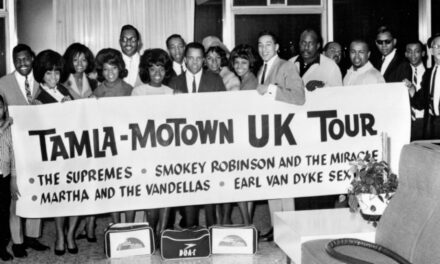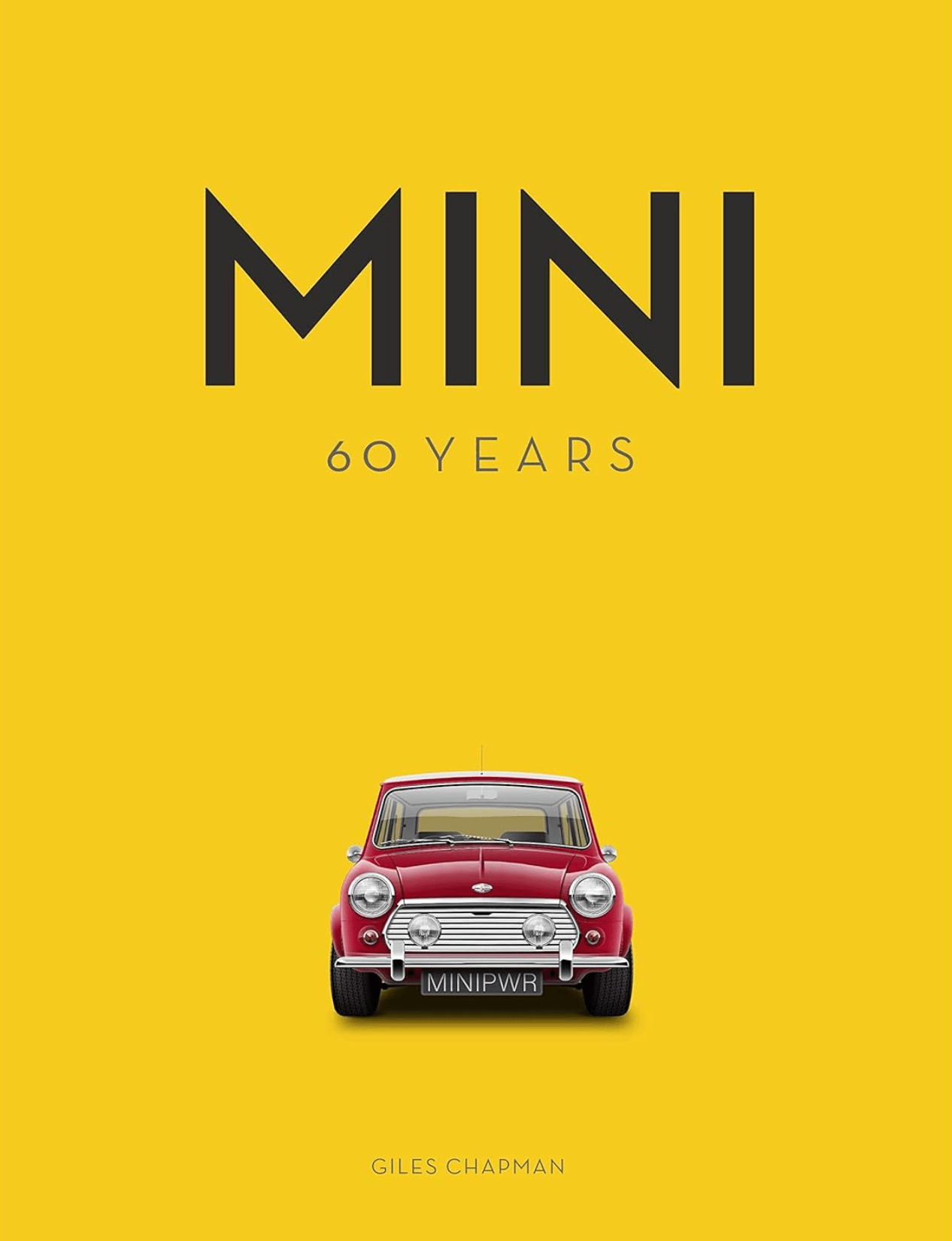1967 proved a tumultuous year in the United Kingdom, with cultural revolutions coinciding with solemn WWII commemorations. As the radically transformative Sixties gathered momentum, Britain celebrated milestone anniversaries while continuing to break new ground.
The Beatles released their landmark album Sgt Pepper’s Lonely Hearts Club Band in June, coinciding with the 50th anniversary of the RAF and 20 years since the first Marshall Plan funds arrived. The “Summer of Love” saw hippies embrace flower power, while the decriminalisation of homosexuality signalled greater social acceptance.
In entertainment, the BBC launched Radio 2 to cater to adult listeners, whilst Liverpool poet Roger McGough helped popularise verse through the trendy TV show How. Tom Stoppard’s play Rosencrantz and Guildenstern are Dead wowed London audiences and epitomised the era’s avant-garde theatre.
Harold Wilson’s Labour government struggled with a declining economy and trade union unrest. Devaluation of the pound in November sparked a financial crisis. But hopes rose after technology giant Rolls-Royce launched its first Concorde supersonic aircraft.
In sports, bare-footed runner Bruce Tulloh won the European 5000m title, whilst Donald Campbell broke the world water speed record before tragically dying later that year.
From revolutionary music to social reforms, 1967 witnessed Britain embracing change but also honouring the past. Whilst looking forward, the country commemorated WWII milestones that shaped its heritage.

Music
The Beatles Release Sgt. Pepper’s
The Beatles released their landmark eighth studio album Sgt. Pepper’s Lonely Hearts Club Band in June 1967 to commercial success and critical acclaim worldwide. Widely considered one of the most influential albums of all time, it pioneered the psychedelic rock genre and marked a creative high point for the Fab Four.
After ceasing live performances in 1966, the Beatles devoted their energy wholly to studio innovation. Working for over four months with producer George Martin, they embraced an experimental approach and lavish production techniques including tape loops, sound effects, and eclectic instrumentation.
Conceptually, Sgt. Pepper presented the Beatles masquerading as a fictional Edwardian military band to free them artistically. The album cover featured a collage of iconic figures from history, created by artist Peter Blake. Musically, it incorporated diverse influences from Indian classical to big band jazz, unified by hallucinatory psychedelic textures.
Songs like the orchestral “A Day in the Life” showcased sophisticated arrangements, while the funky “With a Little Help from My Friends” became an instant classic. Indian sitars and colourful tones permeated “Lucy in the Sky with Diamonds,” widely believed to reference LSD. The diversity and craft demonstrated the band’s maturation.
Sgt. Pepper was preceded by the double A-side single “Strawberry Fields Forever/Penny Lane,” heightening anticipation. Upon its June 1 UK release, the album sold 250,000 copies in its first week. It spent 27 weeks at #1 in Britain and 15 weeks atop the US Billboard charts. Eventually it sold over 32 million copies worldwide.
Hailed as revolutionary, Sgt. Pepper became a defining work of the 1960s counterculture. It popularised escapism and psychedelia while expanding notions of rock composition. Musicians rapidly embraced its innovations, from studio experimentation to fusing Western and Eastern sounds. The album inspired countless artists and new sub-genres, changing pop’s landscape.
In 1968, Sgt. Pepper won 4 Grammy Awards including Album of the Year. It has consistently ranked at or near the top of greatest album polls, including Rolling Stone’s definitive 500 list. Marking pop music’s evolution into art, it demonstrated the Beatles’ ability to transcend even their own early phenomenon. Sgt. Pepper’s fusion of ambition and craftsmanship remains influential over 50 years later.
This landmark compilation has introduced generations of fans to the incredible history of the most storied band in music. For its 50th anniversary, the collection has been expanded with 9 additional tracks, including “Blackbird”, “Glass Onion” and the new song, “Now And Then”. The last Beatles song, “Now And Then” completes John Lennon’s 1970s vocal and piano demo recording with parts played by Paul McCartney, George Harrison and Ringo Starr, as well as a new arrangement for strings. The 2CD collection now features 37 tracks, 6 of which have new mixes for 2023. The booklet contains new sleeve notes by journalist and author John Harris. For current fans and future generations alike, the new 1966 – 1970 collection is a joyous celebration of The Beatles’ timeless musical legacy.
The Rolling Stones Face Drug Charges
In February 1967, Rolling Stones members Mick Jagger and Keith Richards were arrested and charged with drug offences, sparking national controversy and highlighting the clash between rock music counterculture and the British establishment. The case amplified concerns over recreational drug use among youth inspired by bands like the Stones.
Police raided Richards’ West Sussex home after a tip-off, allegedly discovering marijuana. Both Jagger and Richards were charged with illegal drug possession and granted bail. Rumours swirled that they faced heavy sentences if convicted, up to 10 years in prison. The case became a national media storm, emphasising generational and cultural divides.
The arrests came amidst growing alarm over unauthorised drug use in 1960s Britain, particularly LSD. The Stones were targeted as emblematic of rock music’s supposedly corrupting influence. Their bad boy image and sexually charged lyrics already perturbed conservatives despite immense popularity among youth.
Jagger and Richards maintained the small quantity of cannabis found was for personal use only, denying drug trafficking claims. But police seemingly sought to make an example of the high-profile pair, seizing on their counterculture influence over British youth. The case highlighted the establishment’s refusal to condone drug experimentation, despite shifting social attitudes.
By coinciding with the “Summer of Love”, the arrests fueled moral panic over the meteoric rise of psychedelic drug culture. The Stones’ association with social rebellion promoted fears their example could spur wider illegal narcotics activity. However, supporters condemned the charges as oppressive and hypocritical.
Ultimately, amidst uproar and recriminations, Jagger and Richards saw their charges reduced to simply allowing cannabis use in their presence. In July, they were fined and released on probation. The scandal revealed divisions between conservative institutions, rock culture’s ethos of personal freedom, and the complex realities of recreational drug use for young people.
While the Stones rebounded, their ordeal demonstrated authorities’ power to punish influential counterculture figures. The case became a cautionary tale within 1960s rock music, where drug use was common but far less acceptable to the mainstream than today. Despite the reduced sentences, the arrests marked the dark side of rock star profile in a polarised era.

Engelbert Humperdinck Has No. 1 Hit
Singer Engelbert Humperdinck became Britain’s top pop crooner, scoring two of the year’s biggest #1 singles with his lush ballads “Release Me” and “The Last Waltz.” The smooth-voiced heartthrob’s dominance demonstrated the continued mainstream appeal of romantic pop against the rising tide of rock and psychedelia.
Born Arnold Dorsey, the Indian-raised British vocalist took the stage name Engelbert Humperdinck after 19th century German composer Hansel and Gretel’s librettist. His deep velvety voice and good looks evoked traditional crooners like Tom Jones. After years singing in nightclubs, Humperdinck got his big break on a new TV pop show.
Performing “Release Me” in 1967 made him an overnight star, the song racing up the charts. Its anguished lyrics and soaring strings epitomised pop balladry aimed at adult audiences, providing light entertainment. Spending six weeks at #1 in Britain, “Release Me” prevented the Beatles’ seminal “Penny Lane” from reaching the top spot.
Humperdinck consolidated his popularity with “The Last Waltz,” another brooding ballad showcasing his rich baritone. It spent five weeks at #1 in Britain. His #1 compilation Engelbert Humperdinck also became the UK’s top selling album of 1967. The formerly unknown singer ended the year as the nation’s highest-selling recording artist.
For Britain’s older generations and conservative establishment, Humperdinck represented a nostalgic contrast to rock music’s youthful rebellion. His suave image and polite love songs offered reassuring proof of traditional pop’s dominance, despite the encroaching psychedelic wave.
However, Humperdinck appealed across demographics with his listenable ballads and charisma. His systematic calculated rise reflected prevailing industry norms, unlike rock’s spontaneous ethos. Nevertheless, his success highlighted persistent mainstream appetite for uncomplicated romance-themed pop amidst 1960s upheaval.
Although initially dismissed by critics as derivative, Humperdinck managed to sustain popularity as a consummate professional. He embraced evolving styles while retaining his core strengths – a rich warm voice and charming stage presence. Four decades after his meteoric rise, Humperdinck remained a successful international touring act, his 1967 #1s still fondly remembered nostalgic classics.
It's time to embrace the slower pace!
There's no denying it - you're OLD, but that comes with a lot of perks. You can say the most outrageous things and somehow get away with it. You can dress however you damn well please. And after learning from so many mistakes, you're now as wise as you are wizened. It's your time to recline, and this hilarious book will show you how it's done.
Entertainment
BBC Launches Radio 2 Station
On September 30, 1967, the BBC launched Radio 2, a new station focused on light entertainment for listeners aged over 35. The first presenter heard was DJ Pete Murray. Radio 2 expanded the BBC’s offerings, capturing older audiences by broadcasting popular music alongside comedy shows, lifestyle programs, and news coverage.
Previously, the BBC only had stations targeting either highbrow tastes or teenagers. Radio 1, launched earlier in 1967 for young audiences, concentrated on chart pop music and rock. With Radio 2, the BBC now recognized the need to serve middle-aged and older listeners who felt alienated by Radio 1’s youth-centric tone.
Radio 2 incorporated more variety and nostalgia. Its presenters like Jimmy Young, Terry Wogan, and Ken Bruce became beloved household names by providing cheerful daily companionship. The station balanced an easy listening mix of music by Frank Sinatra, Nat King Cole, and Vera Lynn alongside comedies like The Navy Lark.
By appealing to the average 35+ listener not served elsewhere on the BBC, Radio 2 quickly gained traction. Within a year it reached 8 million weekly listeners, eventually becoming the UK’s most popular station. Radio 2 proved vital for isolated seniors, with the announcers’ voices providing welcome interaction.
As society evolved, Radio 2 updated gradually to continue resonating with target demographics. Music selections expanded to encompass baby boomer tastes, although the focus remained on beloved classics and light entertainment. Even amidst immense cultural change, Radio 2 offered continuity.
By 2017, Radio 2 became Britain’s most listened-to station with 15 million weekly listeners. Yet it retained the warmth and accessibility established in 1967. The mix of music, personalities and humour still provided comfort and companionship to mature audiences, 50 years after pioneering older listeners’ needs.

The Forsyte Saga Airs on BBC
The BBC drama The Forsyte Saga became an unexpected television phenomenon when it aired in 1967, captivating viewers across 26 hour-long episodes. Adapted from Nobel Prize-winner John Galsworthy’s series of novels, the family saga spanning decades enthralled audiences with its soapy intrigues and strong casting.
Galsworthy’s tales about the upper middle class Forsyte family had been previously adapted for film and radio. For the 1967 adaptation, veteran screenwriter Donald Wilson and producer David Giles brought the books vividly to life in a lengthy serial format. While initially slotted into a late Sunday timeslot, word quickly spread about the show’s gripping drama.
Viewership grew rapidly, with people eagerly discussing each episode at work or in queues every Monday. Eventually the BBC rescheduled The Forsyte Saga to Saturday nights at peak viewing time, where it drew in 18 million viewers per episode, over half the British population. This was unheard of for a prestige period drama.
Much of the buzz centred around the steamy love triangle between brooding entrepreneur Soames Forsyte, his beautiful wife Irene, and dashing architect Philip Bosinney. Played by Eric Porter, Nyree Dawn Porter and Kenneth More respectively, the three leads performed with emotional intensity amidst opulent late Victorian backdrops.
While focused on elite intrigues and betrayals, Donald Wilson’s nuanced script transcended melodrama. Irene’s torment as Soames’ mistreated wife, and her awakening passion for Bosinney, spoke to 1960s sympathy for female autonomy. Philip’s thwarted creativity also mirrored youth frustration with conformism.
Amidst Britain’s tumultuous present, The Forsyte Saga offered an absorbing escape into the past. But clever social commentary made its family clashes resonate with contemporary resonance too. Millions tuned in weekly, enthralled by the vivid characters, scandalous affairs, and expert storytelling.
The Forsyte Saga revived British television drama and became the BBC’s first major worldwide export success. Its vision of restrained passion amidst society pretence entranced global viewers, making household names of its leads. The series set the stage for beloved 1970s miniseries like Upstairs, Downstairs. But few matched its magic formula of stellar production values meeting timeless intrigue.
In his own words, the heavyweight champion of the world pulls no punches as he chronicles the battles he faced in and out of the ring in this fascinating memoir edited by Nobel Prize-winning novelist, Toni Morrison.
This is a multifaceted portrait of Muhammad Ali only he could render: sports legend, unapologetic anti-war advocate, outrageous showman and gracious goodwill ambassador, fighter, lover, poet, and provocateur, and an irresistible force to be reckoned with.
Who better to tell the tale than the man who went the distance living it?
Royal Albert Hall Concert for Muhammad Ali
In May 1967, Muhammad Ali boxed in a playful charity exhibition event at London’s prestigious Royal Albert Hall, just two months before being stripped of his heavyweight boxing world title for refusing the Vietnam draft. Ali’s fun boxing rounds captivated the star-studded crowd and raised substantial funds, marking a high point before his boxing exile began.
Ali was at the peak of his fame and boxing prowess in 1967 when he agreed to the Royal Albert Hall event. Although world champion, he could not box professionally in countries like Britain without becoming a British citizen first. So the contest was arranged as a fundraising spectacle, with Ali facing British boxer Brian London over five rounds.
Tickets for the May 11th event sold rapidly thanks to Ali’s global celebrity. On the night, the Royal Albert Hall was packed with over 6000 screaming fans plus celebrities like Liz Taylor, David Frost and Tom Jones. Millions more watched live on the BBC. The mood was joyful as crowds awaited seeing Ali’s electrifying skills live.
Once boxing began, Ali did not disappoint. He showboated with trademark shuffle steps and verbal taunting, entertainingly evading London’s swings. The five playful rounds saw Ali score points easily while toying with his opponent, floating like a butterfly. Ultimately Ali was declared the victor, to the crowd’s delight.
The event raised around £25,000, donated to charity. For attending fans, it was a rare chance to see the legendary, controversial Ali exhibit his boxing artistry. Just weeks later however, Ali was banned from boxing for over 3 years after refusing to serve in Vietnam, seeing his title stripped.
His Royal Albert Hall spectacle marked the final time Britons could see Ali box live during his pivotal peak years before his triumphant comeback in 1971. Both hugely enjoyable and now tinged with poignancy, the show underlined Ali’s bond with British supporters during his exile. It remains a singular moment in his storied career.
Aged eighteen with a taste for adventure, Francis Chichester emigrated to New Zealand with ten pounds in his pocket. He tried his hand as a boxer, shepherd, lumberjack and gold prospector, before returning to England.
Having qualified as a pilot, in 1929 he embarked on his most famous solo flight in the de Havilland Gipsy Moth from England to Australia. Shortly afterward, he would survive a near-death catastrophe in an attempt to fly solo around the world.
Turning to sailing, he won the first single-handed transatlantic yacht race in Gipsy Moth III, despite having been diagnosed with cancer two years previously. In 1967, he became the first person to sail around the world solo from west to east via the great capes.
Culture
Chichester Circumnavigates Globe Solo: 10 Years Since Historic Voyage
This May marks a decade since Sir Francis Chichester sailed into Plymouth harbor, completing his monumental solo circumnavigation of the globe on his yacht Gipsy Moth IV. At the age of 65, Chichester became the first person ever to accomplish the tremendous challenge of sailing around the world alone, setting a speed record in the process.
Chichester’s groundbreaking voyage departed England on 27 August 1966 and ended on 28 May 1967, taking 9 months and 1 day to complete the epic journey. His course followed the traditional Clipper Route around the treacherous Cape Horn and Cape of Good Hope, subjecting Chichester and his 53-foot ketch-rigged yacht to all that the vast Southern and Pacific Oceans could conjure.
From the outset, Chichester imposed strict rules on his journey to qualify as the first true solo circumnavigation under sail. He did not receive outside assistance at any point during the voyage, relying solely on the equipment aboard Gipsy Moth IV. Apart from occasional radio contact, Chichester was alone with his thoughts for months in isolation at sea.
The passage was fraught with challenges requiring immense skill and perseverance to overcome. Gipsy Moth IV suffered significant structural damage rounding the Horn, forcing Chichester to make repairs himself while underway. Navigating reefs and storms around Australia pushed his abilities to their limits. As he battled both the sea and solitude, Chichester found resilience through his deep connection with the ocean.
When Chichester finally sailed Gipsy Moth IV back into Plymouth on 28 May to a throng of well-wishers, he was knighted for his historic achievement. Against all odds, this former Royal Air Force pilot and entrepreneur in his 60s had revived England’s tradition and pride in sailing.
Chichester’s solo globe crossing represents a pioneering chapter in maritime history. His meticulous planning, technical skill, and steadfast spirit in isolation broke new ground for individual sailors everywhere. 10 years later, Chichester continues to inspire adventurous souls not to be defined by age or limits.

Politics
Devaluation of the Pound
On November 18, 1967, Harold Wilson’s Labour government made the dramatic decision to devalue the pound sterling by 14.3% against the US dollar, down from $2.80 to $2.40. This controversial gambit aimed to revive Britain’s flagging exports and reduce its growing trade deficit amidst economic turmoil. However, devaluation also risked accelerating inflation and lowering living standards.
Since 1964, Wilson had pursued deficit reduction while rejecting devaluation and the austerity it required. But by 1967, Britain’s economy faltered badly as export demand shrank and costs rose. With the pound overvalued compared to rivals, British exports were uncompetitive while imports flooded in. The trade gap widened alarmingly.
Reluctantly, Wilson sanctioned devaluation despite fears of it being seen as a humiliation and failure of government policy. The hope was a cheaper pound would make exports more affordable abroad while curbing demand for imports, correcting the imbalance. In the short term, devaluation did provide some economic stimulus.
However, the move damaged Wilson’s credibility and Labour’s reputation for economic management. Devaluation also stoked fears of rising prices, higher interest rates and cuts in public spending, hurting voters’ standard of living. Living costs soon accelerated, with inflation hitting 6% by 1969.
While initially denying it, Wilson soon had to announce wage and price freezes along with public spending reductions to control inflation and stabilise sterling. The early optimism around devaluation gave way to austerity and discontent. Labour would go on to lose the 1970 election to the Tories.
In retrospect, 1967 marked a turning point as Britain’s post-war growth slumped after years of mismanaged policies. Devaluation demonstrated the failure of Wilson’s piecemeal measures to address the economy’s deep structural issues and lagging productivity. The country’s economic decline would continue throughout the 1970s.
On a warm July evening in 1985, a middle-aged man stood on the pavement of a busy avenue in the heart of Moscow, holding a plastic carrier bag. In his grey suit and tie, he looked like any other Soviet citizen. The bag alone was mildly conspicuous, printed with the red logo of Safeway, the British supermarket.
The man was a spy. A senior KGB officer, for more than a decade he had supplied his British spymasters with a stream of priceless secrets from deep within the Soviet intelligence machine. No spy had done more to damage the KGB. The Safeway bag was a signal: to activate his escape plan to be smuggled out of Soviet Russia. So began one of the boldest and most extraordinary episodes in the history of spying.
Ben Macintyre reveals a tale of espionage, betrayal and raw courage that changed the course of the Cold War forever . . .
Release of Spies Burgess and Maclean Announced
The British government publicly acknowledged for the first time that defected diplomats Guy Burgess and Donald Maclean were living in the Soviet Union after fleeing there in 1951. The admission ended years of secrecy surrounding one of the Cold War’s most infamous spy cases.
Burgess and Maclean were graduates of Cambridge University recruited in the 1930s to spy for the Soviet Union. They penetrated the British Foreign Office, transmitting state secrets while rising up the ranks seemingly as loyal civil servants.
In 1951, tipped off that they were under suspicion, the two diplomats defected together to Moscow to evade arrest. Their disappearance caused an international scandal and accusations of establishment complicity. Despite a high-profile manhunt, their whereabouts stayed concealed.
For over 15 years, the British government refused to confirm the pair’s presence in the Soviet Union, still a politically sensitive issue. However, in 1967 the Russians finally revealed that Burgess and Maclean lived in Moscow and had been granted Soviet citizenship.
With the truth exposed, Britain had no choice but to acknowledge the spies’ defection. Their confession after so many years helped close a demoralizing Cold War chapter that had raised troubling questions of upper-class loyalty and establishment infiltration.
However, in 1967 the case still left a complex legacy. Burgess and Maclean’s motivations were debated anew amid changing attitudes. Sympathizers saw the idealistic students as misguided rather than treacherous. But their betrayal still signified the murky moral compromises of the early Cold War era.
The case also foreshadowed later notorious defections like Kim Philby’s in 1963, underscoring fears of deception and infiltration at the highest levels during that paranoid time. Even in the 1960s, Burgess and Maclean’s shadowy flight from justice in 1951 retained symbolic resonance.
Celebrate 40 years of compilations with NOW That’s What I Call 40 Years – 43 tracks across 3 LPs - honouring the legacy with a selection of the best from 40 years of NOW. Take the journey from the first edition back in 1983, right up to the present day. NOW That’s What I Call 40 Years – celebrating NOW’s legacy with Massive Pop Hits from the past 40 years.
Winnie Ewing Elected as SNP MP
On November 29, 1967, Scottish solicitor Winnie Ewing pulled off a political upset by winning the Hamilton by-election as a Scottish National Party (SNP) candidate. Her landmark victory catalysed the rise of modern Scottish nationalism and brought the SNP unprecedented Westminster representation.
Ewing stood for the fiercely contested by-election after SNP founder James Halliday’s death necessitated a vote in the traditionally Labour stronghold. Initially given little chance, Ewing campaigned tirelessly on a platform of Home Rule self-government for Scotland to end its perceived neglect.
Though the SNP took just 5% of votes in Hamilton in the 1966 general election, Ewing capitalised on simmering discontent with Labour’s stagnant governance. Her slogan “Stop The World, Scotland Wants To Get On” resonated with voters desiring change.
On election night, Ewing defeated Labour by over 5,000 votes in a seismic result. At just 31 years old, she arrived at Parliament as the sole SNP representative. Her maiden speech on St Andrew’s Day emphasising Scotland’s distinct national identity received thunderous applause.
Ewing’s breakthrough demonstrated surging appetite for the SNP’s constitutional aims after decades of being marginalised. By giving Scottish nationalism its first real electoral success, she forced the issue into the mainstream.
Within 10 years, the SNP increased its vote share from 5% to over 30%, paving the way for the 1979 devolution referendum. Ewing’s triumph made Scottish self-determination a viable political cause rather than a fringe movement.
Although she lost her seat in 1970, Ewing had alerted Westminster to changing Scottish attitudes. She later served in the devolved Scottish Parliament before retiring in 2003 with her place assured as the mother of modern Scottish nationalism.

Sports
Tottenham Win the FA Cup
On May 20, 1967, Tottenham Hotspur football club capped a successful season by defeating Chelsea 2-1 in the final of the FA Cup held at Wembley Stadium. Over 100,000 spectators saw Spurs lift England’s most prestigious domestic football trophy for the fifth time.
The North London side were clear underdogs ahead of the final against a Chelsea team that had already won the Football League First Division title that season. But Tottenham manager Bill Nicholson had built a formidable squad blending experienced stars like Dave Mackay with emerging talents like Jimmy Greaves.
The final began brightly for Tottenham when they took the lead after just 30 seconds through Jimmy Robertson’s composed finish. However, Chelsea equalized before halftime through Bobby Tambling. The tense second half remained level until the 82nd minute.
Tottenham’s Terry Dyson then burst into the box where he was brought down for a penalty. Up stepped Jimmy Greaves to smash home the spot-kick and restore Spurs’ lead with just minutes left. A desperate Chelsea couldn’t force an equalizer as Tottenham held on.
Greaves finished as the 1967 Cup’s leading scorer while 20-year-old winger Alan Gilzean won praise for his fearless performance. But Tottenham’s win was a supreme team effort built on Nicholson’s shrewd tactical nous. They celebrated wildly with fans after a memorable Wembley triumph.
Winning the FA Cup completed Spurs’ own domestic double, having already won the FA Charity Shield and been crowned league runners-up. Their victory underlined Tottenham’s reputation for attractive attacking football built around homegrown talent.
The 1967 final marked the pinnacle of this famous Tottenham side. Their stylish win over formidable opposition went down as one of Wembley’s classic Cup finals, earning nationwide plaudits. For Spurs fans, the victory remains a cherished memory.
Generations are familiar with the haunting black and white television footage of Donald Campbell somersaulting to his death in his famous Bluebird boat on Coniston Water in January, 1967. It has become an iconic image of the decade. His towering achievements, and the drama of his passing, are thus part of the national psyche.
But what of the man himself?
Donald Campbell Killed in Boat Crash
On January 4th 1967, British speed record breaker Donald Campbell was killed instantly when his jet-powered boat Bluebird K7 crashed at over 300 mph on Coniston Water in northwest England. He was attempting to break his own water speed record but tragically died in the process.
45-year-old Campbell was a household name in Britain for daring speed record attempts. In 1964, he set the water speed record of 276 mph on Lake Dumbleyung in Australia. Seeking to go even faster, he embarked on a comeback bid at Coniston Water where his father Malcolm originally broke records in the 1930s.
Despite poor weather conditions, Campbell pushed ahead on January 4th for a new record attempt. Early runs went well, with Bluebird K7 reaching over 280mph. However, during his fifth run, the boat became airborne after its nose lifted. It flipped violently and disintegrated on impact with the water.
Campbell was killed immediately as the wreckage sank rapidly. The accident happened so fast that it was unclear what caused the fatal loss of control. Later investigations concluded Bluebird’s front runners likely hit waves, lifting the nose until the boat took flight.
News of Campbell’s death shocked the nation. Thousands lined the route of his funeral cortege in deep mourning. He was buried alongside his father on the shores of Coniston Water, scene of the Campbell family’s triumphs and tragedies. A memorial still stands in the village.
It took over 30 years for Campbell’s body to be recovered from the lakebed along with Bluebird K7’s wreckage. Restored and displayed in museums, the boat serves as a poignant reminder of his daring exploits and tragic end. Though claiming his life, Coniston Water is forever linked with Donald Campbell’s legendary feats of speed.

Tom Simpson Dies in Tour de France
On July 13, 1967, British professional cyclist Tom Simpson died in tragic circumstances during the Tour de France on the notorious Mont Ventoux mountain stage. His collapse and death sent shockwaves through the sport and was a watershed moment in highlighting the costs of riders’ exertions.
Regarded as Britain’s greatest ever cyclist, Simpson was a world champion who had won memorable Tour stages in previous years. In 1967, he was again competing at the pinnacle of the sport as the Tour tackled its most gruelling leg in Provence.
As the searing heat took its toll during the 13th stage’s ascent of the arduous Ventoux mountain, 29-year-old Simpson began weaving across the road in distress in the final kilometres. With heart failure looming, he collapsed and lost consciousness. Despite mouth-to-mouth resuscitation, Simpson died on the mountainside.
The post-mortem found that extreme physical exhaustion combined with Simpson’s use of amphetamines and brandy led to his body shutting down. In an era before sports science, Simpson had fatally overextended himself in the pursuit of glory. His death led to introspection over cycling’s unhealthy demands.
Shocked riders finished the stage with their arms linked in tribute. Simpson was given an honoured funeral in his English hometown. His death became a catalyst for modernising professional cycling’s attitudes to doping and safety.
No rider had ever suffered a fatality in the Tour de France before. Simpson’s loss, especially under such public circumstances, underscored the intense physical sacrifices required at the pinnacle of cycling. It marked the sport’s first reality check before wider reform took root.
INCLUDES AUTOMATIC ACCESS TO SUN SUPERDAYS, HOLS FROM £9.50 & SUN RAFFLE, FROM JAN 1, 2024
Get every page of The Sun as printed including supplements, magazines and puzzles, direct to your device every day. And now with automatic access to Sun Superdays, Hols from £9.50 and Sun Raffle via Sun Savers, from Jan 1, 2024.
1967 proved a year of both nostalgia and forward momentum for Britain, as reverence for the past coexisted with cultural and political changes reshaping society. The Beatles spearheaded the eroding of old social norms, while authorities pushed back against rising drug use and nonconformity. Commemorations honoured Britain’s WWII resilience, but economic troubles emerged exposing postwar weaknesses. A spirit of innovation seeded revolutions in music, fashion and film, even as tradition endured through events like the investiture of the Prince of Wales.
Popular culture took bold new directions, led by The Beatles at the apex of their artistry and fame. Their seminal album Sgt. Pepper’s Lonely Hearts Club Band, released in June 1967, pioneered studio techniques and songwriting complexity that transformed pop music aspirations. Its kaleidoscopic sound world reflecting 1960s psychedelia and experimentation made it an instant classic. The summer of ‘67 also saw the birth of the rock festival at Monterey in California. Elements of counterculture went mainstream, with more permissive attitudes emerging around sexuality, drugs and social protest.
However, conservatism persisted in the establishment. In February, Rolling Stones members Mick Jagger and Keith Richards were arrested on drugs charges, seen as symbols of youth corruption. Their trial and sentencing in June highlighted the widening generation gap, though public opinion sided with them. Authorities also painfully evicted residents of the hippie enclave at London’s UFO Club in October. While forward-looking youth embraced liberation, the old guard resisted its excesses.
Nonetheless, innovators flourished across the arts, fashion and entertainment. The satirical comedy series Monty Python’s Flying Circus debuted in October, its surreal humour and absurdity becoming legendary. Austin Powers director Richard Lester pioneered an irreverent style in the Beatles’ films A Hard Day’s Night and Help!, reflecting changing attitudes. Graphic designer Alan Fletcher introduced postmodernism to advertising with visually bold campaigns shattering marketing conventions. Models like Twiggy and designers Mary Quant and Barbara Hulanicki defined a new angular mod style, with miniskirts symbolising female freedom.

The year also saw commemorations of WWII’s watershed events like the Battle of Britain and the Blitz fifty years before. Veterans marched once more, evoking the heroism of the wartime generation. Their stoic resilience and national unity stood in contrast to perceived contemporary fractures. Ceremonies like the Queen Elizabeth II’s visit to the war cemeteries in France maintained continuity with Britain’s proud but painful history.
However, the postwar era’s flaws increasingly emerged. Devaluation of the pound in November indicated Harold Wilson’s government was struggling to manage ongoing economic drift. The need to soften austerity measures sowed seeds of the 1970s stagnation. Defections like Kim Philby’s reminded Britons of lingering Cold War deceit. Glasgow’s worsening slums despite promises of renewal showed social progress was uneven. As the 1960s progressed, hopes of forging a fairer society receded.
But 1967 also bore exciting portents of change. The decriminalisation of homosexuality and legalisation of abortion promised greater social freedoms, overcoming past repressions. Welsh pop singer Tom Jones took Las Vegas by storm, leading a British Invasion of America’s music scene. Satirists like Private Eye magazine irreverently punctured the establishment. England’s football victory in the World Cup bolstered national pride. The investiture of the Prince of Wales on Welsh TV in July reflected modernising monarchy. In diverse fields, Britons shaped their world anew.
For the contradictory nation Britain was in 1967, Paul McCartney’s observation that “you’re a bit of a laugh, but I love you” seemed fitting. The year left legacies of remarkable artistic expression and liberalisation, but also exposed systemic challenges. As the 1960s’ zeitgeist took hold, both celebrations of emerging identity and sober reflections on shortcomings marked the country’s uneven transition into a new era. Neither entirely looking back nor wholly looking forward, Britain straddled past values and future visions.























